Ohio SkyLites - June 2023
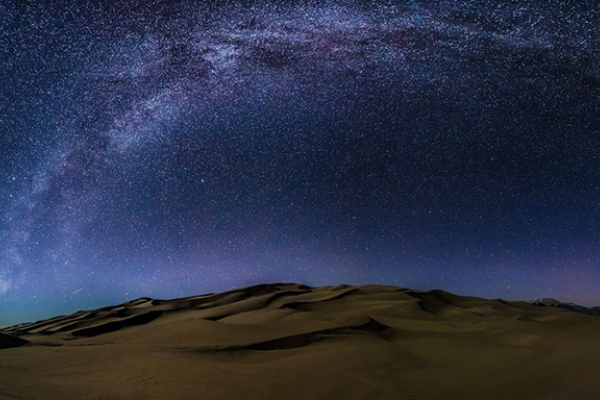
What’s Up? Constellations, Planets, and Astronomical Events Visible in June 2023
-Written and Compiled by Alyssa Whalen
Happy Summer! In terms of the astronomical calendar, summer begins after the Summer Solstice. This means summer begins on the longest day of the year, June 21st. While all days have about 24 hours, we call the solstices the longest and shortest days due to the amount of daylight we see. The Summer Solstice creates the “longest day” because the Earth’s northern hemisphere is tilted towards the sun. Therefore, the sun will appear higher in the sky, and stay above the horizon for a larger fraction of the day. This causes warmer temperatures and longer stretches of daylight in the northern hemisphere, but it has the opposite effect on the southern hemisphere. On the day of the solstice, there will be approximately 15 hours of daylight in Ohio, but the amount of daylight varies by latitude.
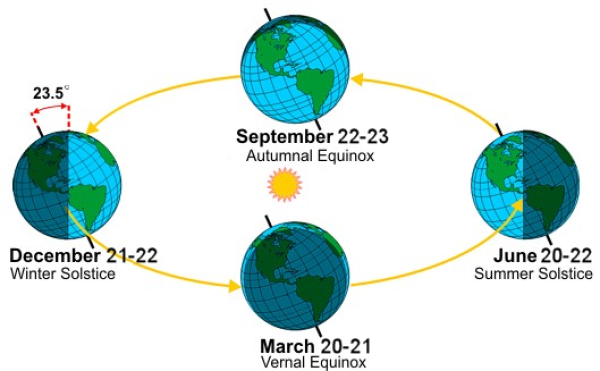
June’s full moon occurs on the evening of June 3rd. There are many nicknames for the moon this month, but the most common is the Strawberry Moon. This nickname was given by Native Americans, as this is the time of year when the strawberries would ripen and be ready to harvest. The Rose moon is the Celtic nickname for June’s full moon since it is the height of the rose blooming season. The new moon occurs on June 18th, so the moon will not be visible in the night sky. The moon is the brightest object in Earth’s sky after the Sun, so the days surrounding the new moon will always be the best times to observe fainter objects. In cities, light pollution makes the difference between the sky during a new and a full moon very small, but if there is an opportunity to stargaze away from the big cities, the difference is staggering.
A supernova has been spotted in the Pinwheel Galaxy! M101 is located in the constellation Ursa Majoris and is a popular object for astrophotographers due to as a nearly face-on spiral galaxy. The supernova was spotted by amateur astronomers on the night of May 19th.

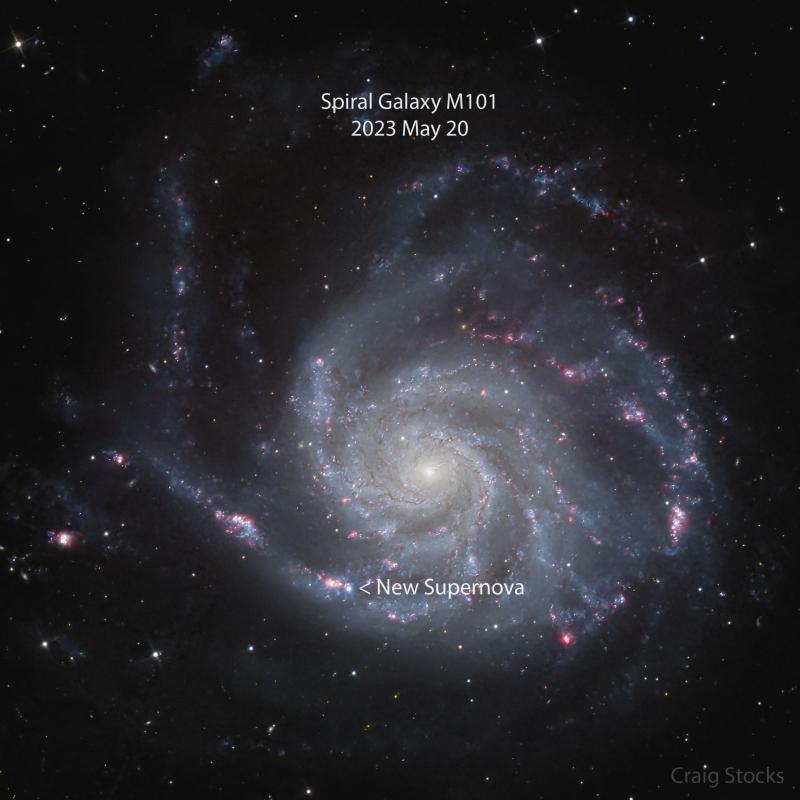
Supernovae occur when a massive star reaches the end of its life. The star’s core becomes unstable, eventually leading to the collapse and explosion of the star. Supernovae are some of the highest energy processes that happen in space, so the event is extremely luminous. The Pinwheel galaxy is 21 million light-years away, yet the explosion of this star is visible to us with an amateur 4.5-inch telescope. This also means the star we are observing went supernova over 21 million years ago. This is a fairly rare occurrence to witness, as supernovae occur approximately once every 50 years per galaxy.
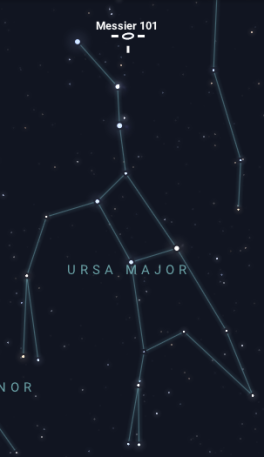
Mercury is too close to the sun to be observed this month. Since it is the closest planet to the sun, there are only a few select windows of time that it is far enough away to observe properly. Sadly, it won’t be visible again until early August. Venus, however, will be in greatest eastern elongation on June 4th. This means Venus is as far away from the sun as possible in our sky. Venus will be 45.5 degrees away from the sun and will appear bright in our evening sky. Greatest elongation is the best time to view Venus, and it will be visible in the western sky between sundown and midnight.
Mars will also have decent observing conditions this month. While not in conjunction (yet), Mars and Venus are very close in the sky this month. Mars is slightly eastward from Venus, and it will be visible in the western sky between sundown and slightly past midnight. Jupiter is finally returning from its journey behind the sun, though it is still fairly difficult to observe. The signature gas giant will rise around 3 am, so it will be visible for a small window of time in the early morning before sunrise. Saturn continues to rise earlier in the morning, but you’ll still have to get up pretty early. Saturn rises around 1 am and will have good observing conditions until sunrise. Uranus rises slightly after Jupiter, around 4 am. Uranus however, due to its distance from Earth and its position close to the sun in our sky, will be nearly impossible to observe. Neptune will rise around 2 am, but, as usual, it is too far away from Earth to view without a telescope or binoculars.
Now that the summer season has returned, so has the Milky Way’s center returned to our night sky. In Ohio, the Milky Way’s center is near the southern horizon, but the galaxy’s band stretches across the whole sky. While the Milky Way is impossible to see in cities due to light pollution (and still difficult to spot with the naked eye in darker skies), there are many reliable ways to spot it using constellations. The easiest way to find the Milky Way’s center is through the constellation Sagittarius. The upper body of the centaur is often compared to a teapot, whose spout points directly to Sagittarius A*, which is the supermassive black hole at our galaxy’s center.
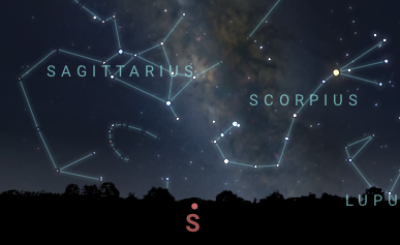
It is also common to hear that the Milky Way is the steam that floats out of the teapot. Another way to find the Milky Way is through the constellation Cygnus. Connecting Deneb (the swan’s tail) to Alberio (the swan’s beak) reveals the plane of the Milky Way. An easy way to remember it is that the swan is flying along the milky way toward its center since Cygnus is one of the easier constellations to identify.
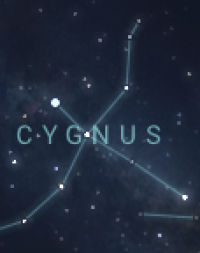
Sources:
- https://www.timeanddate.com/sun/@5165418?month=6&year=2023
- http://www.seasky.org/astronomy/astronomy-calendar-2023.html
- https://www.timeanddate.com/astronomy/moon/strawberry.html
- https://skyandtelescope.org/astronomy-news/bright-supernova-blazes-in-m101-the-pinwheel-galaxy/
- https://www.space.com/6638-supernova.html
- https://stellarium-web.org/
Image Credits:
- Orbit Diagram: https://www.weather.gov/cle/Seasons
- Pinwheel Galaxy (Supernova): https://apod.nasa.gov/apod/ap230522.html
- Credit: Craig Stocks
- Constellations: https://stellarium-web.org/
